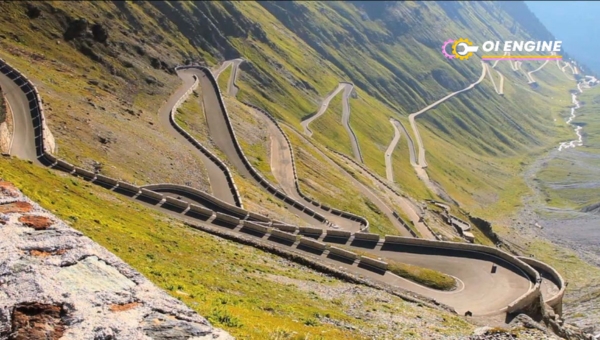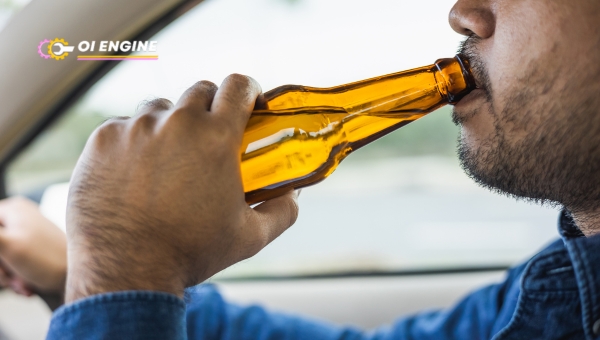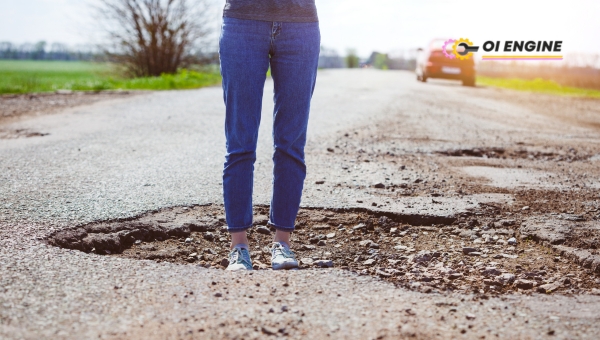As the leaves take on hues of autumn and a certain chill fills the air, it means one thing – Thanksgiving is near. But while most of us eagerly anticipate the family gatherings, the turkey, and the pumpkin pie, there remains to lurk in wait for an under-discussed subject – The Most Dangerous Roads During Thanksgiving.
What’s the real story behind these hazardous routes? Why have they claimed such a notorious reputation? It’s high time we unveil this dark splotch tainting this festive period.
Road conditions during any holiday season can be unpredictable but when it comes to Thanksgiving, dangerous roads take on an ominous presence. High traffic volume combined with prevalent cases of drunk driving paves the way for ripe accident scenarios.
From packed highways with speeding drivers to less populated areas where help might not readily come by, road safety becomes a significant concern as we navigate through highways teetering on dangerous precipices.
The Reality of the Most Dangerous Roads During Thanksgiving
During Thanksgiving, the roads in our country can potentially turn into some of the most dangerous highways.

But what exactly is it that transforms these typical roads into perilous zones during this holiday season? Let’s find out by unveiling the truth about these hazards.
Unveiling the Truth
The factors leading to increased road dangers during Thanksgiving are manifold.
- Increase in Traffic: One of the primary reasons behind these heightened risks is a simple matter of volume. Millions of people travel during this time, leading to an increase in traffic volume, especially on major highways and interstates, therefore increasing the risk of accidents.
- Weather Conditions: Around this period, weather plays a significant role as well. With winter just around the corner for many parts of our country, icy or slick conditions may prevail on roads and coupled with night driving, can be a challenging factor for drivers who aren’t well-acclimatized to such situations leading to mishaps.
- Fatigue: Last but important is tiredness from long-distance traveling. Hitting the road after celebrating Thanksgiving with family and friends can result in fatigue, which might impact drivers’ response times potentially leading to collisions.
Now that we’ve taken a look at some common reasons behind heightened risks on roads during Thanksgiving let’s explore one particularly worrying threat deeper – drunk driving.
Also Read: How To Get A CDL – Your Ultimate Guide!
The Issue of Drunk Driving
It’s a sad reality that during the celebrations of Thanksgiving, the joyous atmosphere is often tainted by a spike in incidents related to drunk driving.

Many people, feeling high-spirited and jovial, fail to consider their actions’ consequences on the roads.
Drunk Driving: A Major Threat on Thanksgiving
During the holiday season, particularly on Thanksgiving, there is a marked increase in drunk driving incidents.
People are thrilled, celebrating with family and friends, and often losing awareness of their alcohol intake. While indulging in festive cheer is important, we mustn’t forget about our safety when we hit the road.
Imagine this scenario: After hours of devouring delicious turkey and sharing laughs with your loved ones, you feel unusually merry due to one too many glasses of your favorite drink.
You assure yourself that you’re perfectly fine to drive home – but are you? This convincing yet potentially fatal belief has unfortunately been the precursor for countless accidents during Thanksgiving.
The Impact of Drunk Driving on Road Safety
The harmful impact drunk driving has on road safety becomes painfully apparent each year around Thanksgiving when sober drivers share the streets with those who have overindulged. Here’s how it plays out:
- Impaired motor skills: Alcohol reduces hand-eye coordination significantly- it affects basic balance and motor skills which are essential for safe driving.
- Slower reaction times: Alcohol slows down your functioning brain cells which leads to delayed reactions- a key factor behind most car crashes.
- Poor judgment: Booze impairs our reasoning ability or judgment; intoxicated individuals tend to think they are invincible behind the wheel leading them into dangerous situations.
- Visibility problems: Excessive drinking hampers visual perception; difficulty in seeing doubles up risk factors while driving at night or amid bad weather conditions during Thanksgiving.
- Inattention: Alcohol acts as a deterrent to focus- intoxicated drivers often fail to pay attention to traffic rules, street signs, or even other cars on the road.
The above points starkly expose how drunk driving increases hazards on roads. In our shared responsibility of keeping the roads safe during Thanksgiving, let’s ensure that we do not contribute to this mounting problem.
The Issue of Drunk Driving
One of the main contributing factors that make Thanksgiving roads the most dangerous is drunk driving. With plenty of family gatherings and social functions, many people think it’s okay to have a few drinks before hitting the road. However, this relaxed attitude towards alcohol can have severe consequences.
Analyzing Progress Since 2008
Since 2008, progress in combating drunk driving has been slow despite concerted efforts from various sectors. The record shows that fatalities resulting from such behavior remain disturbingly high during the Thanksgiving holiday season every year.
For instance, in 2017 alone it was reported over a thousand fatalities happened due to drunk-driving-related accidents during the holiday period.
Although there have been public awareness campaigns and stricter law enforcement, these sobering statistics present an unsolved issue.
The stagnation indicates that mere regulations are not enough; rather we must bring about societal change about our approach towards drunken driving.
Factors Contributing to Flat Fatality Rates
While technological innovations have made vehicles safer overall and laws are more strict than ever against impaired driving, these haven’t led to drastic changes in fatality figures over the past decade. We can attribute this stagnant rate to multiple causes:
- Complacency: Many people believe they won’t get into an accident after consuming alcohol.
- Social Norms: Excessive drinking is often normalized during holidays such as Thanksgiving.
- Inadequate Law Enforcement: Due to stretched resources during holiday seasons, police struggle to maintain surveillance at all potentially dangerous routes.
- Lack of Public Transportation Options: In rural and remote areas especially, lack of reliable public transport encourages individuals who’ve imbibed alcohol to drive themselves.
- Insufficient Awareness Programs: Despite existing campaigns against drunk driving, message penetration remains uneven across population demographics.
Addressing these factors requires dedicated effort from law enforcement agencies as well as ordinary citizens like me who have a role to play in discouraging drunk driving.
We all need to be more conscious of our choices and prioritize safety not just for ourselves but for others sharing the roads during the Thanksgiving season.
Also Read: Hot Shot Insurance Top Picks For 2024
Hidden Dangers in Less-Populated Areas
When talking about the most dangerous roads during Thanksgiving, we cannot forget to mention those less populated and rural areas.
While it seems logical to expect most accidents in crowded metropolitan areas, hidden dangers are lurking on less-trodden paths as well.
With fewer street lights, help stations, and more challenging terrain, these high-risk routes outside cityscapes account for a significant number of accidents.
High-risk Routes Outside Metro Areas
- In reality, accidents do not just happen on bustling city streets. Even on the isolated plains of the Texas Panhandle or the winding roads of Idaho’s Sawtooth Mountains – places far from the metro’s everyday chaos – unexpected accident rates peak during Thanksgiving.
- Roads such as U.S. Route 6 in Utah or Alaska’s Dalton Highway turn into risk zones during this holiday season. Factors such as poor weather conditions – heavy snowfall or fog can make visibility very poor.
- Furthermore, these lonely avenues lack quick access to emergency services making it even harder for victims to get immediate help after an accident.
- Lastly, drivers unfamiliar with rural road etiquettes are more susceptible to losing control over their vehicle due to unpredicted sharp turns and steep slopes.
As alarming as they seem these incidents underline how safety on high-risk routes outside metro areas remains a nagging concern during holidays like Thanksgiving.
Addressing Road Safety in Remote Areas
Now that we know where danger lurks let’s take a brief look into what steps can be taken:
- Increase public awareness about high-risk roads: Everybody must understand the risks associated with traveling through remote regions, especially during holidays like Thanksgiving.
- Amendment of laws: Law enforcement agencies should enforce strict safety regulations specifically focusing on risky terrains which include but are not limited to harsh driving penalties for overspeeding and rash driving.
- Better infrastructure: Local authorities need funding allocation towards well-lit highways, clear road instructions signages, and easy access to emergency services in these areas.
- Technological advancement: Installation of weather information boards and GPS-enabled navigation systems for motorists traveling in these remote regions can drastically increase safety measures.
- Road safety education: Launching local initiatives and campaigns to educate drivers about potential dangers associated with rural roads can be a powerful tool.
While improvements are being made, there’s still a substantial amount of work needed to ensure the most dangerous roads during Thanksgiving are made safer for every driver out there.
Also Read: Pilot Cars By State Directory: Escort Vehicles Guide
Safety Measures
Navigating the most dangerous roads during Thanksgiving not only involves serious risks but also demands responsible decisions.

The combination of increased traffic, varying weather conditions, and holiday-oriented mindsets can potentially generate hazardous situations on roads.
By implementing a few safety measures, it’s possible to reduce the risk factor and ensure a safer journey.
Safe Driving Strategies For High-Risk Roads
Driving on high-risk routes during Thanksgiving requires more than just good driving skills; it calls for strategic defensive driving techniques that could significantly lower the chance of accidents. Here are some recommendations:
- Stay Alert: Your utmost attention is required while driving on high-risk roads. Always be aware of other drivers’ actions and intentions near your vehicle.
- Follow Speed Limits: Speeding increases the possibility of mishaps. Stick to the speed limit or drive even slower if weather conditions are unfavorable.
- Maintain Safe Distance: Keeping a safe distance from other vehicles allows you some time to react if something unexpected happens.
- Avoid Distractions: Keep your mobile devices off or in silent mode while driving. Every moment counts when you’re at the wheel.
Importance of Travel Schedule Planning
Planning your travel schedule efficiently can play a substantial role in ensuring safer car trips during Thanksgiving.
A wisely planned schedule helps you avoid peak traffic times, thus reducing the risk on notorious highways. Here are some tips:
- Start Early or Late: Start your journey before sunrise or after sunset when roads are less congested.
- Plan Your Route: Use GPS technology to be aware of the current road conditions, check for an alternative route if possible, and stay updated about weather forecasts.
- Break up Long Drives: Instead of driving non-stop for many hours, split your journey into manageable parts. This reduces fatigue-related errors and offers chances for rest and refreshments.
- Be Flexible with Schedule: Thanksgiving is a big holiday event; hence delays are inevitable. Build some flexibility in your travel plan which can significantly lower stress levels during unexpected situations like roadblocks or traffic jams.
By executing these safety measures and staying vigilant, one can navigate through The Most Dangerous Roads During Thanksgiving successfully and safely!
Also Read: Trailer Interchange Coverage-Protect Your Fleet!
FAQs
What are the worst traffic days around Thanksgiving?
The busiest traffic days around Thanksgiving are typically the Wednesday before and the Sunday after. These peak days see an influx of holiday travelers on the road, making them potentially dangerous.
Is it dangerous to drive on Thanksgiving Eve?
Yes, driving on Thanksgiving Eve can be risky. Many people start their holiday celebrations early which might include alcohol consumption, leading to potentially impaired drivers on the road.
Why is Thanksgiving the deadliest holiday?
Thanksgiving can be considered one of the deadliest holidays due to a combination of increased travel, often in bad weather conditions along with higher rates of drunk or distracted driving.
What’s the most dangerous holiday to drive?
While it can vary year by year and state by state, generally speaking, major holidays like Thanksgiving and New Year’s Eve tend to have higher than average number of road accidents mainly due to alcohol-related incidents.
Is Thanksgiving Day a bad travel day?
While the morning of Thanksgiving Day tends to have less traffic compared to surrounding days, by midday roads start filling up again as people head out for their celebrations making it hazardous for travelers.
Also Read: Unlock Postal Productivity With Postage Meters
Conclusion
In retrospect, I genuinely believe that we can lessen the dreadful impact of the most dangerous roads during Thanksgiving.
Thorough planning, readiness to engage in defensive driving techniques, and strict adherence to laws against drunk driving – these might seem tedious but are life-saving.
Remember, it only takes one mistake, one moment of impaired judgment or reckless disregard to become a statistic.
While the government and local authorities have their part to play, ultimately our journey safety boils down to individual responsibility.
